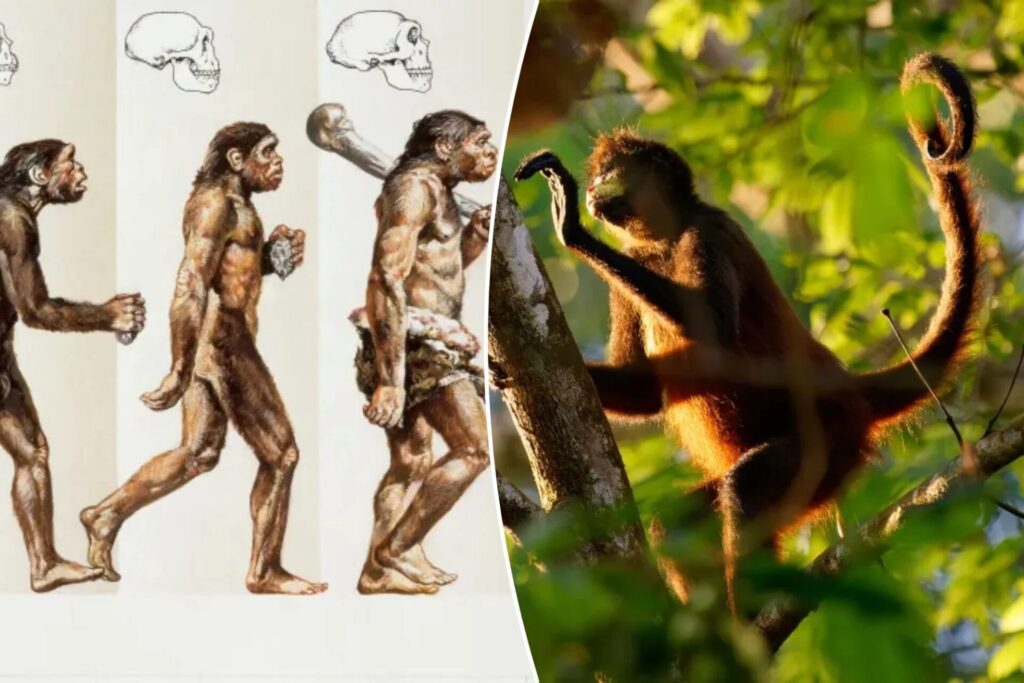
In a groundbreaking revelation, scientists from New York University Langone Health may have unraveled one of evolution’s enduring enigmas — the disappearance of tails in early humans, marking a pivotal departure from their primate ancestors, a transition dating back 25 million years.
Lead study author, Bo Xia, PhD, expressed his lifelong fascination with this evolutionary puzzle, stating, “Our study begins to explain how evolution removed our tails, a question that has intrigued me since I was young.”

Delving into DNA samples from humans, tailless apes, and monkeys, the researchers made a remarkable discovery. They identified a genetic distinction shared by humans and apes without tails but absent in monkeys, not through mutation but rather via the insertion of a genetic code snippet known as AluY during prehistoric epochs.
This novel gene, revealed for the first time, was found to influence tail lengths. When coupled with the TBXT gene, it facilitated the production of two types of ribonucleic acid crucial for cellular structure, ultimately resulting in tail loss in humans and apes.

Dr. Jef Boeke, the Sol and Judith Bergstein Director of the Institute for Systems Genetics, highlighted the significance of this finding, emphasizing that while most human introns carry repetitive DNA sequences without affecting gene expression, this specific AluY insertion conspicuously dictated tail length.
Moreover, the evolutionary schism that led to tail loss purportedly gave rise to the coccyx, or tailbone, in humans, gorillas, and chimpanzees. Yet, the precise reasons underlying ancient creatures’ predisposition towards tail loss remain elusive.

Experiments conducted on mice suggest a potential correlation between tail loss and an increased incidence of neural tube defects, akin to conditions like spina bifida in humans, where the spine fails to align properly with the spinal cord.
Dr. Itai Yanai, a study author, expressed the need for future experiments to explore the hypothesis that the loss of a tail in humans may have contributed to the prevalence of neural tube birth defects, shedding further light on the intricate interplay between evolutionary adaptations and biological consequences.

Leave a Reply